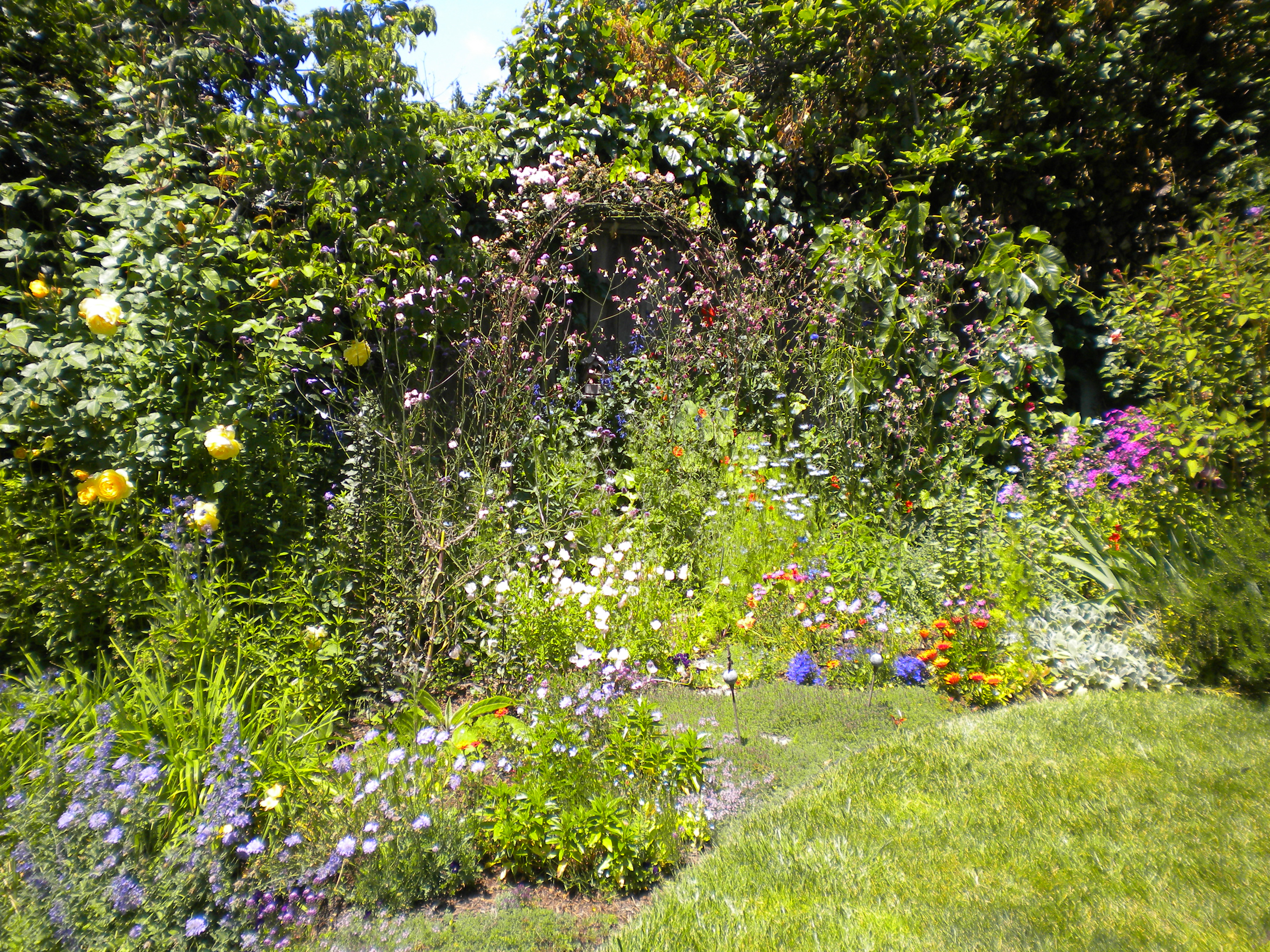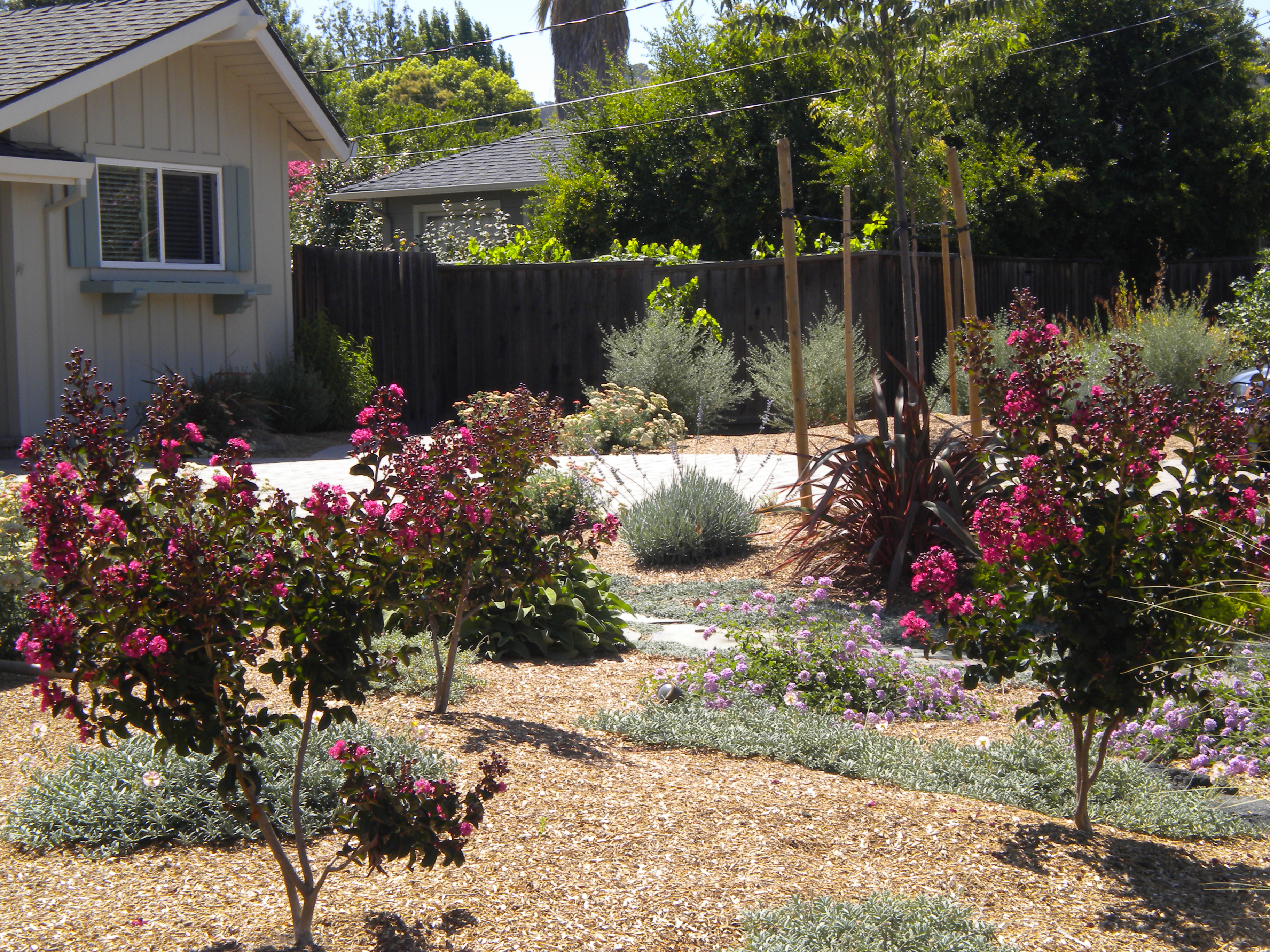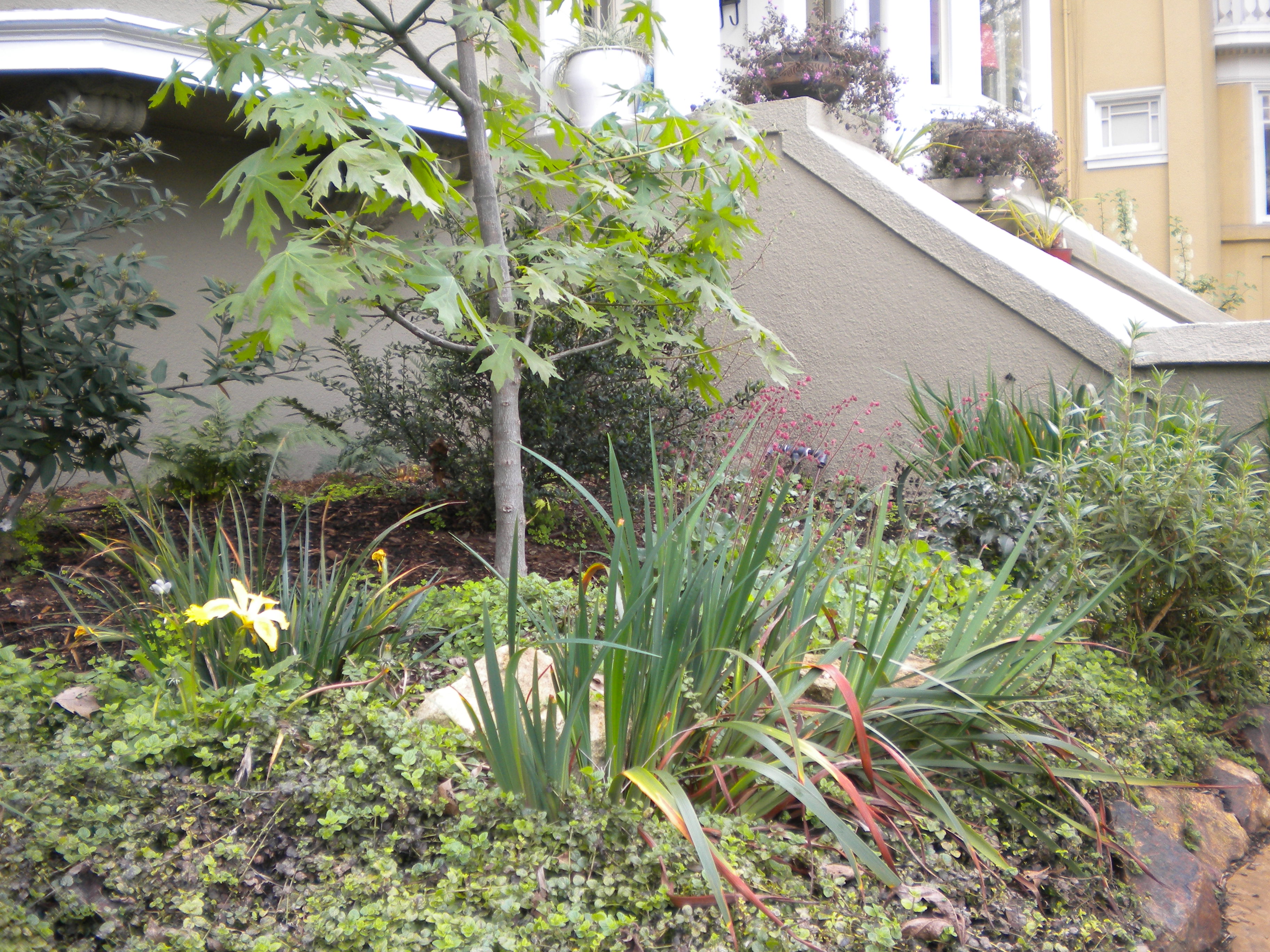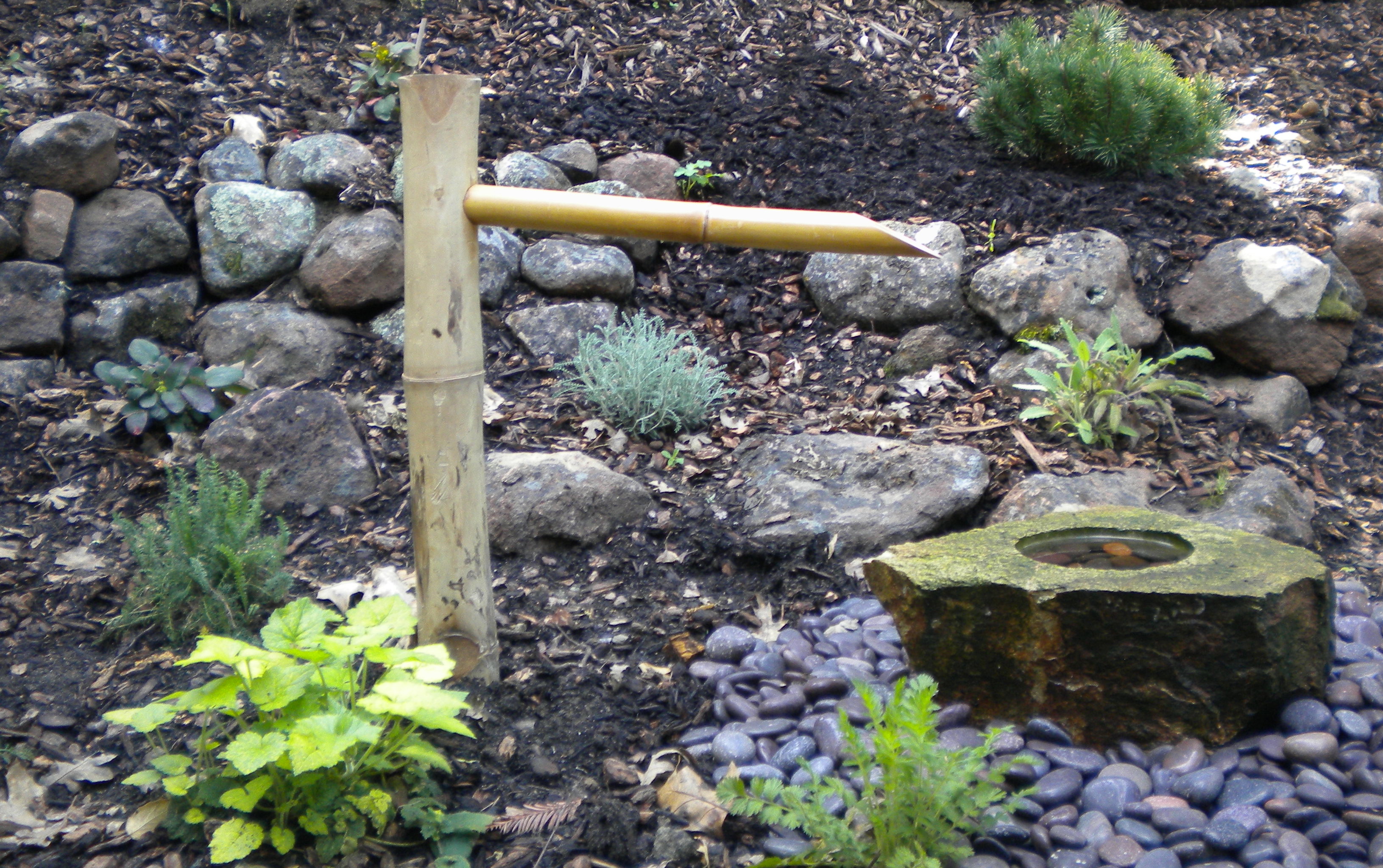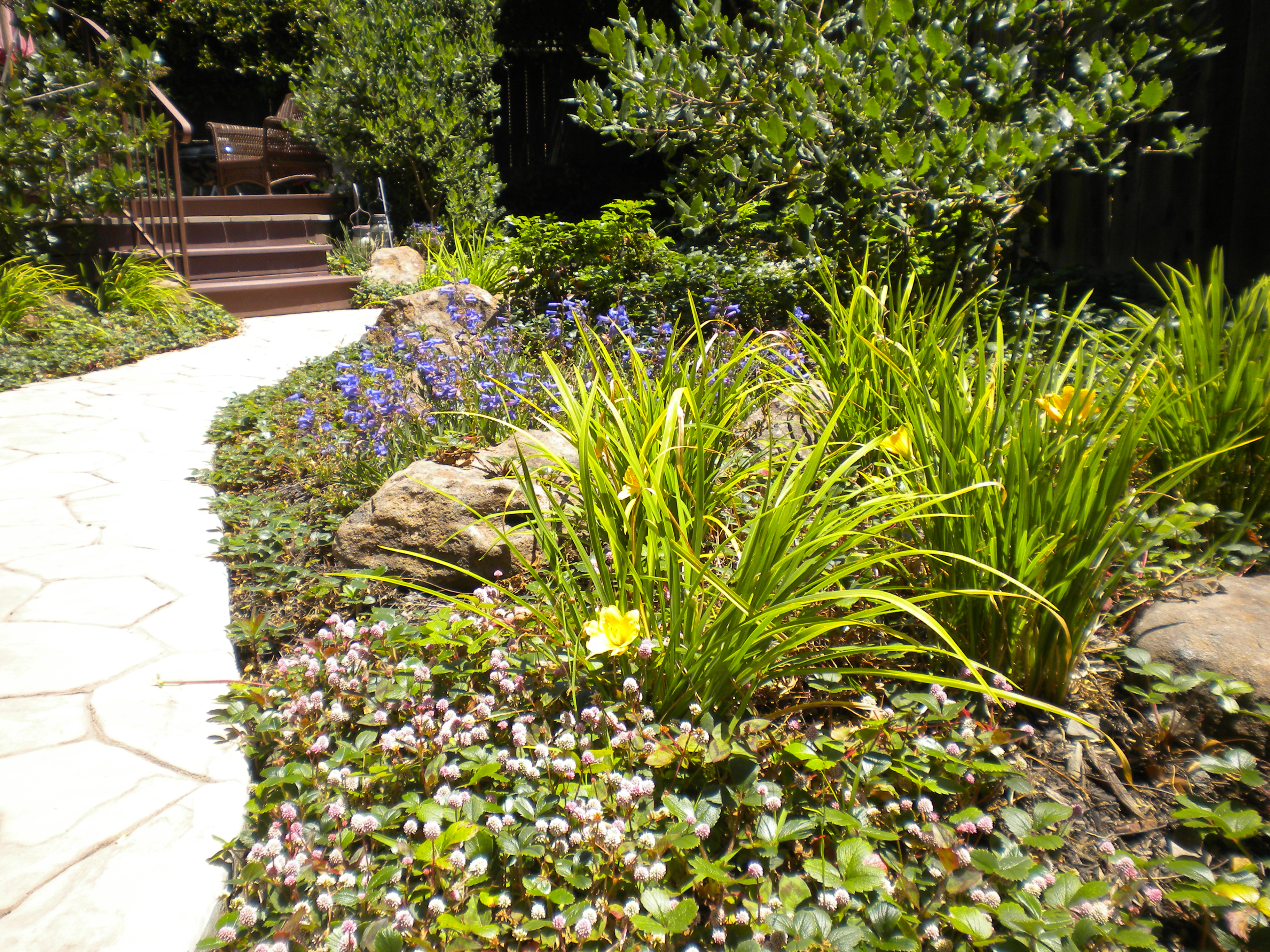Author Archives: admin_gs
Maintenance Mode
We are in the season of hands-and-knees work. Sometimes I feel as if I am part truffle pig, rooting in the dirt and laying waste to every weed in site. Sometimes I feel as if I am part cutter bee, delicately pruning away dead and overgrown plants. Mostly I feel old because of all the sounds that issue forth when I squat down or push myself upright.
There is no way around it. Gardens need attention in Spring to minimize weeds, clear out old material, and maintain good air flow to reduce pest and disease. This is particularly true for our collector’s garden and garden that have been over-planted. Giving the garden a thorough cleaning-up ensures healthy plants and a hard prune can give mature woody herbs a new lease on life. This sort of close-up and personal care also reacquaints us with what plants thrive in the garden and what plants need to be carted away with the green waste. RIP.
I should also mention, this is a great time to do some minor replanting. Not only have we clipped and culled the garden to achieve the most vivacious assemblage of plants possible, but the nurseries have wonderful Spring and Summer annuals and perennials. They practically jump into my truck in the hopes of brightening up any dark corner or bare spot your garden may have.
Water already?!
Actually, February is the best time to schedule irrigation work for the upcoming dry season. Most people wait until it is an emergency, a July emergency! Here is a compromise: take care of your irrigation in May before it becomes urgent.
If you have a functional irrigation system, now is a good time to fix leaks and conduct minor retrofitting to make your water use more efficient. Try updating with a pressure compensating drip system with check valves. This reduces wet spots close to the valves and at low elevations. Water saving spray nozzles such as the MP rotators are great for reducing run-off with their low precipitation rate. These are modifications that can save on your water bill and improve the health of the plants in your garden in a quantifiable way.
Check out Netafim and MP rotators for more information.
Lakeshore Woodland
I have often heard that California Native gardens look dry and weedy. This does not have to be the case.
The photo above is from a lawn conversion we completed two years ago. The area is North facing with heavy (Dark Matter heavy!) clay soils and seasonal drainage issues. The goals of the homeowners were to address the drainage and create a lush garden with very low maintenance requirements.
Drainage can be tricky. In this case, the property sloped toward the street and not another property. We devised and implemented a plan to keep as much water on site as possible to avoid discharging into the storm drains. [Gasp] “In clay soil?!” Yes, in clay soil. The downspouts were routed by triple-walled perforated drain pipe into massive trenches of drain rock. Should the trenched become exhausted, we had pop-up caps to allow the water to escape and seep across the surface. It has worked beautifully. An added benefit: the drain work afforded us an opportunity to address the heavy clay by amending it with rich compost and creating well-drained soil mounds. Once ready to plant, the fun really began.
We had taken weeks to assemble a plant palette that was based on a mixed evergreen community. We had selected primarily shade-loving and shade-tolerating plants that shared a similar range of soil and water requirements. Acer macrophyllum, and Cornus satomi anchored the garden and were accompanied by Rhamnus californica, Garrya elliptica, Corylus cornuta, Cercis occidentalis, and Ceanothus ‘Julia Phelps’. Accents and groundcovers were spiky Iris douglasii and PCH, soft Heuchera micrantha, sneaky Satureja douglasii, and [jazz hands] white Hellebore. Oh, there were some others: bulbs that like the season seep, some ferns that come and go, and a few short-lived perennials that temporarily fill-in until the shrubs fill-out.
You can see in the photo, this landscape is neither dry or weedy. California has over a dozen zones (depending on your reference material) and dozens of microclimates. If your microclimate is in fact dry, by all means pull together a palette of succulents with a Parkinsonia microphylla and a few Baccharis pilularis. Sneak in some Lavandula, Rosmarinus, and Salvia as well. Go ahead and search a few names that I dropped above. I think you will be pleasantly surprised how much life and color you can find in even a dry California Native garden.
Weeds… well, that’s a different story.
A Deer-Friendly Garden
When I worked for a greenhouse grower in Ohio, we had a running joke about “deer-proof.” It’s not what the deer won’t eat; it’s what the deer will eat last. The adherence to a list of deer-proof plants is as absurd in many areas of the East Bay hills as it is in the rural suburbs of Cleveland.
Luckily, we have clients in Lafayette who are deer-friendly in their expectations of landscaping their mostly unfenced property. They have a home neatly situated on a hillside that is crisscrossed with deer trails. Our plan was not to deer-proof, but to deer-tolerate. We pulled together a mostly California native plant palette including Rhamnus crocea (not an easy find), Ribes sanguineum glutinosum, Arctostaphyllos uva-ursi, and Mahonia repens. Of these plants selected, the only ones we had to protect with Liquid Fence were the Ribes. After a few months, the deer relented and no spray was necessary.
A truly deer-friendly garden can be achieved by establishing plants that the deer graze upon. The trick is to select vigorous plants that recover quickly and protect them until they are established enough to withstand deer with the munchies. Grasses such as Koeleria and Elymus are a must. Reseeding annuals or self-propagating perennials such as Trifolium, Chichorium, and Vicia are also great additions.
Keep in mind that in dry seasons the deer may nibble on anything because they are looking for water. Having even a modest water feature can curb this behavior. If certification as a wildlife habitat is part of the plan for the landscape, then a water source is a requirement.
Let Us Pepper Your Garden with Vegetables
I took the day to meet with potential clients, mostly to overhaul or install completely new irrigation systems. A woeful state of affairs with all the warm, dry days that we have had and will be getting. Irrigation irritation was not the only thing these hand-wringing folks had in common.
They all had dreams of converting areas, modest and massive, for the purpose of food production. Fantastic! To help prepare them for the weeks to come, we sorted out a few must haves for success with their crops. Simply put: a sunny spot with few weeds and good soil, water, and protection from pests.
A sunny spot. That spot in your garden that gets sun most of the day will do perfectly. If there are tall buildings or overhanging limbs that block the sun for more than half the day, pick a different spot. If all else fails, you may be growing your vegetables and herbs in pots on your patio or deck.
Few weeds. Never are weeds not an issue. Sheetmulching has been our best practice for getting weeds under control and preparing an area for planting. It not only smothers most weeds, but adding an inch of compost beneath the paper gives your soil an extra helping of nitrogen and a complex mix of microorganisms. Unlike weed barriers and landscape fabrics (black plastic should be outlawed, Period), the paper breaks down over a couple rainy seasons and you plant in it by making x-shaped cuts with a small blade or shovel. The key to keeping the weeds at bay is to keep top-dressing with plant appropriate mulch to maintain a depth of 3 inches, especially over disturbed soil.
!!! Please leave at least 20% of the ground free of mulch. Pick areas beneath shrubs or similar areas that do not have foot traffic. This is for native bees that are ground-nesters that you want, I swear you do, in your garden!!!
Good soil. If you are amending soil to put your crops directly into the ground, start with an aged compost. We use West Coast Chip Harvesters, American Soil & Stone Products, or LH Voss depending on where the job is. Vegetable crops tend to be shallow-rooted, except for perennials such as rhubarb and artichokes. With shallow-rooting in mind, less is more. We usually get away with a mix of parent soil and compost in equal parts. Parent soil around the SF Bay varies widely, so let us assume clay for parent soil in this instance. We start by taking a 3-inch layer of parent soil from a 4 square-foot footprint and chopping it into 1 cubic foot of stinky compost. We stop torturing the soil (and ourselves) when our mixture looks like soil marbles; bigger than peas but smaller than walnuts. Spread the soil back over the original 4 square-foot spot. Do not tamp. If you want to add some protection against weeds, now is a good time for the sheet mulch and another inch or two of compost. Water slowly but generously with a sprayer on the shower setting.
If you are planting in raised beds, disregard the previous paragraph. Import organic soil, specific for vegetables, and tamp layers in 3 inches at time until you reach the appropriate height in the bed. Do not worry about compost this first season, but top-dress with it in seasons to follow.
The area is ready to plant.
Keeping your thirsty plants hydrated is crucial. It’s great to have an irrigation valve dedicated to your vegetables. We have used both solenoid or hose bib timers with much success. We prefer pressure-compensating bubblers for heavy water that can be moved around, increased or decreased, or closed down completely as needed. We were in the habit of installing inline shut-offs on the PE lines, but they ended up being too macro for micro production. Have an assortment of fittings, especially goof plugs, on hand so that leaks can be repaired quickly. Yes, leaks. You will get them, you will know or learn how to fix them. It is just water.
Protection against pests… slugs, snails, white fly, your neighbor’s chicken that went rouge… Good sanitation is key. For ornamental areas we let the leaves fall where they may and decompose back into the soil. We are more vigilant about removing dead, dying, or diseased plant material to a compost bin when dealing with veggies and herbs. If you do not mind the look of straw, this is a light and airy top-dressing that houses very few pests. Straw is less likely to have weed seed than hay. For slugs and snails, fresh copper strips are effective until they are not fresh and baiting a nearby groundcover draws the little buggers away from you crop. Whitefly, as well as a whole mess of sucking and rasping insects can be sprayed off with a hose and the plant can be treated with our Neem oil concoction. But your neighbor’s chicken, well it would go great with your vegetables chopped into a pot full of dumplings. It’s true and you know it.
Following up with the Joneses
You spend weeks or months planning your garden project. Putting together a budget, you try to balance what you want with what you can afford. Then, you meet with a designer or architect. Maybe you go straight to a landscape contractor. Whatever your process, you end up investing a lot of time just to get your project started.
Whether you signed up for a little renovation or an entire do-over, chances are you peek into the work area more than you would like to admit. Do they look busy? Do they look like they know what they are doing? Is the project manager or foreman on site? Is this the answer to your prayers or the beginning of a mistake? What do you do if you don’t like how your garden ends up looking?
For us, January is a good month to revisit some of our gardens. Some of our best laid plans get washed away by an unforeseen drainage issue. We have had dozens of plants wiped out by snails we had not anticipated. And sometimes, an element of our grand design turned out to simply not work. The worst part, we don’t always get a call letting us know we need to come back to remedy these hiccups.
For most of our contracts, we put in 3 follow-up visits to make adjustments or fix the little uglies that rear their heads. Sometimes, the garden needs a year to show us where we got things right and where we got things not-so-right. We try to send emails to clients to check-in. Did they check the back-up battery to the irrigation controller? Have they called the arborist to look at the suspicious black areas on their apple? Are they still getting pooling below the garage door? We have been known to send emails to clients from several years ago just to check-in. It’s less creepy than our habit of doing unscheduled drive-bys.
Taking a moment to swing by a mature project is peace of mind for both the client and us. I drove by a corner lot that we did back in 2003. It was the first time I was able to use a Lyonothamnus floribundus. It looked gorgeous, but the perennials that we installed beneath it were ready for the compost heap. That was part of our plan for succession planting. Too bad our clients had moved without letting the new owners in on our secret. I sat in my truck for a few minutes wondering if I should knock, but decided just to drive by again in a few weeks.
Letting go of a garden can be difficult. Our creations are born from brain and brawn. Sometimes it feels like the genetic crossroads of inspiration and utility, other times perspiration and futility. Going back and revisiting our work helps us learn how we have actually changed and hopefully improved how people see, feel, and connect with their little bit of outdoors. Plus, it’s a good excuse to reconnect with folks that we had a great time working for!
Let It Rain!

I love December. With the fall pruning, composting, and mulching done, it’s time for the heavens to open and restore to the soil what summer sun has taken. As humidity fills the air and clouds somnambulate across the sky, I sit in my office with a cup of tea and wait. I am rewarded with the irregular percussion of rain drops hitting the window. Drop by drop, the months of caked-on dust are washed away from trees and shrubs. The garden and all of its greens are revived with quiet gratitude. Thank you, Rain. I hope you stay a while.
Compost and Mulch: The Gifts that Keep Giving
November, have you composted and mulched your garden? If you like what you see above, then I urge you to consider it.
Compost is technically plant debris that has been subject to the digestive process of an organism, usually an insect or microorganism. This process causes a release of heat that ideally reaches temperatures between 135 and 160 degrees Fahrenheit before the compost is considered “cooked.” It is common practice for vendors of compost to sneak in sawdust or chicken manure into already composted material. If you are a purist, making your own compost without the additives is always an option.
Compost is, in my opinion, the best way to help with heavy soil structure albeit temporarily. It does not change the ratio of sand, silt, and clay, your soil texture, but the humic acid helps to create an ionic environment in the soil that lends to the clay forming aggregates to improve water percolation.
If you have plants that require organic soils as opposed to mineral soils, then compost is a great way to maintain their ideal soil pH for optimal nutrient availability. Also, the compost decomposes slowly and does not cause plants to spike with pest-attracting juvenile growth like chemical fertilizers. Speaking of pests, compost helps create an environment where predator insects thrive and contribute to natural pest reduction in your garden.
If you have mineral soils, the plant palette will dictate if compost is necessary. Most likely, compost is not a critical part of the cultural practices for this type of garden. Here is link that discuss organic and mineral soils. And a link for pH influence of nutrient availability.
Mulch, unlike compost, is not a significant source of nutrients and rarely has a significant influence on soil pH. For me, mulching is the first protocol I use to suppress weeds. A thick layer between plants effectively smothers anything trying to push up from the soil level and below. It is not a cure. Weed seed can still get blown in or carried in by wildlife. The mulch is not a secure place for germinated seeds to root, so pulling them out while they are young is a cinch.
One more contribution of mulch to the garden relates to water. Mulch, especially on slopes, can reduce soil loss during heavy rains. In general, mulch protects the upper layers of soil from water loss and crusting during dry periods. In short, it is a source of moderation when Mother Nature is not.
The Windup and the Pitch
I love this time of year, planting time. We have back-to-back projects ranging from little renovations to entire back gardens. In many cases, the pathways and wood structures are done. What remains to be done is irrigation of various description and installation of plants and mulch.
I have been revisiting emails and notes for each garden, some from as far back as last November when the clients and I first met. The planning, the budgeting, time taken for holidays, birthdays, and vacations have paced the projects into phases. We now find ourselves on the very cusp of completing the garden. I am, admittedly, congratulating myself before the final walk-through, but I cannot resist doing it. It is as if the last few months have been a series of windups, and now we finally get to pitch.
Shorter and cooler days are upon us. The rains are hopefully coming soon as well. In California, this is a great time to plant with far less concern about transplant shock than one would have planting before summer. Granted, there are a few draw backs, but the scale still tips in our favor.
The ground can prove a ferocious foe if unirrigated through summer, as many of our projects this time of year are. If it is an option, we have the home owner run the irrigation every couple of days for about a week before we get going. We leave about two dry days prior to breaking ground so we are not working in mud. This is not necessary if we are dealing with an area that has been prepared with sheetmulching in advance. We have also implemented mobile hose-end sprinklers that are as reliable as the client is committed. Relying on brute strength is a common last resort.
Plant availability and appearance is always a concern. Frankly speaking, fall is not when spring and summer bloomers put their best foot forward. Planting deciduous, herbaceous perennials always feels like a version of the Emperor’s New Clothes. Yes, they look like 1-gallon cans of dirt, but they are really beautiful plants (cut to full color screen shot of website). We best rely on a well-communicated plant lists and planting in phases. Most folks that are looking at a long-term garden plan will know what to expect 5 months and 5 years down the road. Beyond that, they can give us a call to recalibrate.
For homeowners looking for free or inexpensive mulch, start calling now (or last July if you have time travel capabilities). For small to medium companies doing tree work, this is flood season. Call and call again. Know that you are not a priority unless you are in close proximity to their job. Our main challenge with this approach has been coordinating with the arborist. Due to this significant drawback, we have been using West Coast Chip Harvesters with absolutely no complaints for years. If you find yourself in Berkeley or Albany, they have sites where free mulch is stored in the open for locals to use in their gardens. There are options.
And with that, we wait for the rain.

